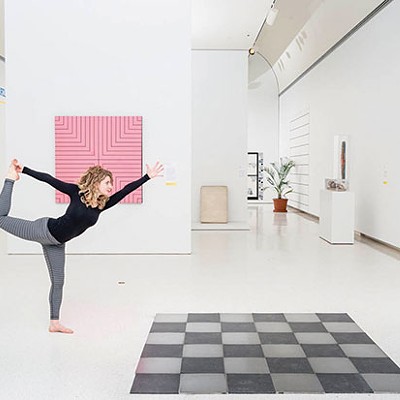Thursday, January 31, 2013
A Newcomer from India Surveys American Yoga
Second in a three-part series by Ruchika Rai
On my first foray to an American hot-yoga studio, the first thing that struck me was the merchandise section right next to the reception. On sale were branded two-piece yoga suits (that can also be used as swimwear) for approximately $50 a piece. Quite a change from my home country of India, where yoga is a universally accessible yet also noncommercial part of the culture.
Perenially on a low budget, I decided to brave the high-temperature yogasana in normal gym apparel. (Albeit, as luck would have it, I happened to find myself the $50 yoga shorts at $10 on Wal-Mart that evening.)
I attended the first class successfully, and this is how I described it to my mother (back in India), on Skype: “Imagine doing yoga under the sun during summers, when the temperature is over 100 degrees Fahrenheit, and paying for it. That’s how it feels.”
Not surprisingly my mother replied, “You must really be insane to do such a thing.”
Hot yoga exemplifies a health phenomenon particular to a consumer society. Time and again, bridging the distinctions between cultures, languages and intellect, we tend to accept, rather naively, the promises of health experts offering illogical health solutions.
When we import an idea from another country, we instead ought to ensure that we accept it wholly, and let it really absorb in our system. If we fail to do that — if we change a traditional practice too much to suit commercial needs — we contribute in creating a lop-sided market, benefiting very few.
Not only is “hot yoga” something no one in India would bother with. But the popularization of yoga in the U.S. has brought about two additional phenomena: high price per class, and a high attrition rate. For instance, a 2007 New York Times article reported an attrition rate of almost 30 percent.
Meanwhile, media reports have also indicated that yoga, as an industry, is slouching toward monopoly. Consider Bikram Choudhury, a Calcutta native who oversees a multimillion-dollar American yoga empire. According to a 2012 Seattle Weekly story by Rebecca Moss, Choudhury had copyrighted his form of yoga, and has now sued his former student Greg Gumucio — who offers hot-yoga classes for $8, whereas Bikram Yoga charges at least $15.
If nothing else, the $8 fee shows that there are market players who can offer yoga that’s more affordable, and hence more accessible — which might get more Americans to practice daily, as is more common in India. It isn’t hard to imagine how inexpensive a conventional yoga class could be, if we could go back to the basics and practice yoga the way its founders practiced it.
Tomorrow: Yoga more like its founders' version














